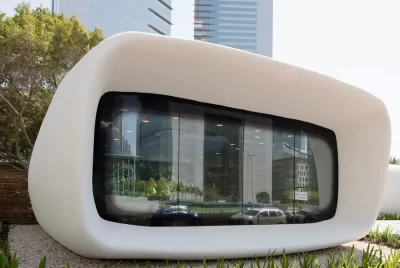Main Types of Materials for 3D Printing
The realm of 3D printing has experienced remarkable growth over the past decade, primarily driven by advancements in technology and the diversification of materials used in the process. Understanding the vast array of materials for 3D printing is crucial for hobbyists, manufacturers, and innovators to leverage the full potential of this technology. With a plethora of options available, how do we determine what material is used for 3D printing-specific applications? This article will delve deep into the main types, shedding light on their properties, benefits, and ideal use cases.
1. Thermoplastics for 3D Printing
Polylactic Acid (PLA)
Sourced from Mother Nature herself, PLA is a sustainable thermoplastic birthed from renewable staples like cornstarch and sugarcane. For those stepping into the vast world of 3D printing, PLA often serves as their first material companion, primarily because of its user-friendliness and forgiving printing temperatures. However, if you’re venturing into projects demanding resilience against extreme temperatures or seeking materials for 3D printing designed for long-term outdoor applications, PLA might not be your top pick. Nevertheless, its versatility shines through when crafting decorative pieces, early-stage prototypes, or components that aren’t subjected to strenuous conditions.
Acrylonitrile Butadiene Styrene (ABS)
When talking about muscle and durability in the thermoplastic family, ABS is hard to overlook. This petroleum-born plastic doesn’t just boast of toughness but wears a crown when discussing the best 3D print material for high-temperature challenges, especially when pitted against PLA. ABS’s inherent strength, fused with a touch of flexibility, paves the way for creations ranging from intricate gears and robust automotive components to popular children’s toys.
Thermoplastic Polyurethane (TPU)
Imagine marrying the elasticity of rubber with the moldability of plastic – that’s TPU for you. A champion of flexibility and known for standing its ground against wear and tear, TPU has become the go-to for items that need to bend but not break. From protective phone cases and comfortable shoe insoles to trendy belts, TPU holds its own.
2. The Resinous Side of 3D Printing
Standard Photopolymer Resin
If you’re chasing that glossy, smooth finish on your 3D prints, these liquid resins are your best bet. Solidifying when exposed to ultraviolet (UV) light, they’re predominantly paired with SLA (Stereolithography) or DLP (Digital Light Processing) 3D printers. The results? Immaculate pieces are a treat for the eyes and touch, making them ideal for detailed prototypes, intricate models, and artisanal jewelry pieces.
Biocompatible Resins
The name drops a significant hint. When we discuss biocompatible materials for 3D printing, we’re referring to those materials that harmoniously coexist with human biology. In the ever-evolving medical world, these resins are transforming lives, sculpting everything from tailor-made dental fixtures and customized hearing aids to precision-based surgical tools.
Tough and Durable Resins
For scenarios where you need your resin-based creations to shoulder stress and strain akin to heavy-duty thermoplastics like ABS or PP, these robust resins come into play. Engineered to withstand the odds, they promise both longevity and resilience.
3. The Metal Renaissance in 3D Printing
The 3D printing tapestry isn’t woven with just plastics and resins. The last few years have seen a metallic revolution, introducing the strength, precision, and aesthetics of metal alloys into the mix. Such an inclusion has dramatically broadened the horizons of what one can achieve with 3D printing, especially in industrial landscapes. From the engineering labs of automotive giants to the workshops of jewelry artisans, the metallic touch is redefining the boundaries of creation. The intricate detailing achievable with metals, combined with their unmatched strength, promises a future where designs are limited only by imagination.
Stainless Steel
Stainless steel is more than just a household name in the kitchen. In the world of 3D printing, stainless steel stands out, primarily due to its renowned corrosion resistance and robustness. When you’re looking to 3D print parts that must withstand environmental factors or stresses without succumbing to wear and tear, stainless steel is a prime choice. Its anti-corrosive properties ensure longevity, making it ideal for industrial parts exposed to elements. Beyond the realm of heavy-duty machinery, the elegance and sheen of stainless steel also find its place in jewelry design. Prototypes that require a blend of aesthetic appeal and strength often rely on stainless steel, given its balanced properties of durability and visual charm.
Aluminum
If there’s a metal that beautifully marries lightweight properties with strength, it’s aluminum. In 3D printing, aluminum is highly revered for its ability to maintain a low weight without compromising on its structural integrity. This quality is especially crucial in sectors like automotive and aerospace, where every gram counts. An airplane component, for instance, must be both lightweight (to enhance fuel efficiency and aerodynamics) and strong enough to endure the rigorous challenges of flight. Similarly, in consumer electronics, where sleek designs and durability are paramount, aluminum’s properties are instrumental. The fact that it’s more accessible and less expensive than some other metals, while still offering commendable strength-to-weight ratios, makes aluminum a favorite in the 3D printing arena.
Titanium
In the hierarchy of metals recognized for strength and lightweight attributes, titanium is arguably at the pinnacle. It’s no wonder that this metal has been a material of choice in the aerospace sector. Consider this: aircraft and spacecraft have to withstand incredible pressures, stresses, and temperature fluctuations, all while maintaining optimal weight. Titanium fits this bill perfectly. But its applications don’t stop at aerospace. The biocompatibility of titanium – its ability to coexist with the human body without causing harm – has made it a material of choice for medical implants. Whether it’s a hip joint or a dental implant, titanium’s strength ensures durability, while its biocompatibility ensures safety. Beyond these applications, the lustrous appearance of titanium, coupled with its robustness, also finds appreciation in the world of jewelry.
4. Ceramics
Ceramics offer high-temperature resistance, hardness, and electrical insulation properties. They are challenging to work with but find applications in areas that require high wear resistance or need to withstand extreme temperatures, such as aerospace or specific industrial applications.
5. Composite Materials
- Carbon Fiber Filled: When materials like PLA or ABS are infused with carbon fibers, they gain enhanced strength and rigidity. These composites are ideal for creating parts that need the lightweight properties of plastic but the strength closer to metals.
- Wood or Stone Filled: These are composite materials that mix standard thermoplastics with wood fibers or stone particles, giving the finished product a unique look and feel. They are primarily used for decorative items, architectural models, and artistic creations.
6. Specialty Materials
This category encompasses niche materials designed for particular use cases:
- Conductive Filaments: For printing electrical circuits.
- Magnetic Materials: Useful for creating parts with magnetic properties.
- Glow-in-the-Dark Filaments: For products that need visibility in the dark.
Selecting the Right Material for the Right Application
- Outdoor Use: If you require 3D printing material for outdoor use, consider ABS or certain UV-resistant specialty filaments. These materials can withstand the elements better than, say, PLA, which might degrade faster.
- High Temperature: As previously mentioned, ABS typically holds the crown as the best 3D print material for high temperatures. However, metal alloys and certain ceramics might also be candidates, depending on the specifics of the application.
- Biocompatibility: If the end product will be in contact with the human body, always prioritize biocompatible materials for 3D printing, such as specific resins designed for this very purpose.
Conclusion
The fascinating world of 3D printing is only as versatile as the materials it utilizes. From thermoplastics to resins, metal alloys to ceramics, all the materials for 3D printing bring their unique properties and applications to the table. With the growing interest and innovation in the domain, we can only anticipate the emergence of even more advanced and tailored materials, expanding the horizons of what’s possible with 3D printing. If you enjoyed the read, explore more at 3D Printing Hive!




